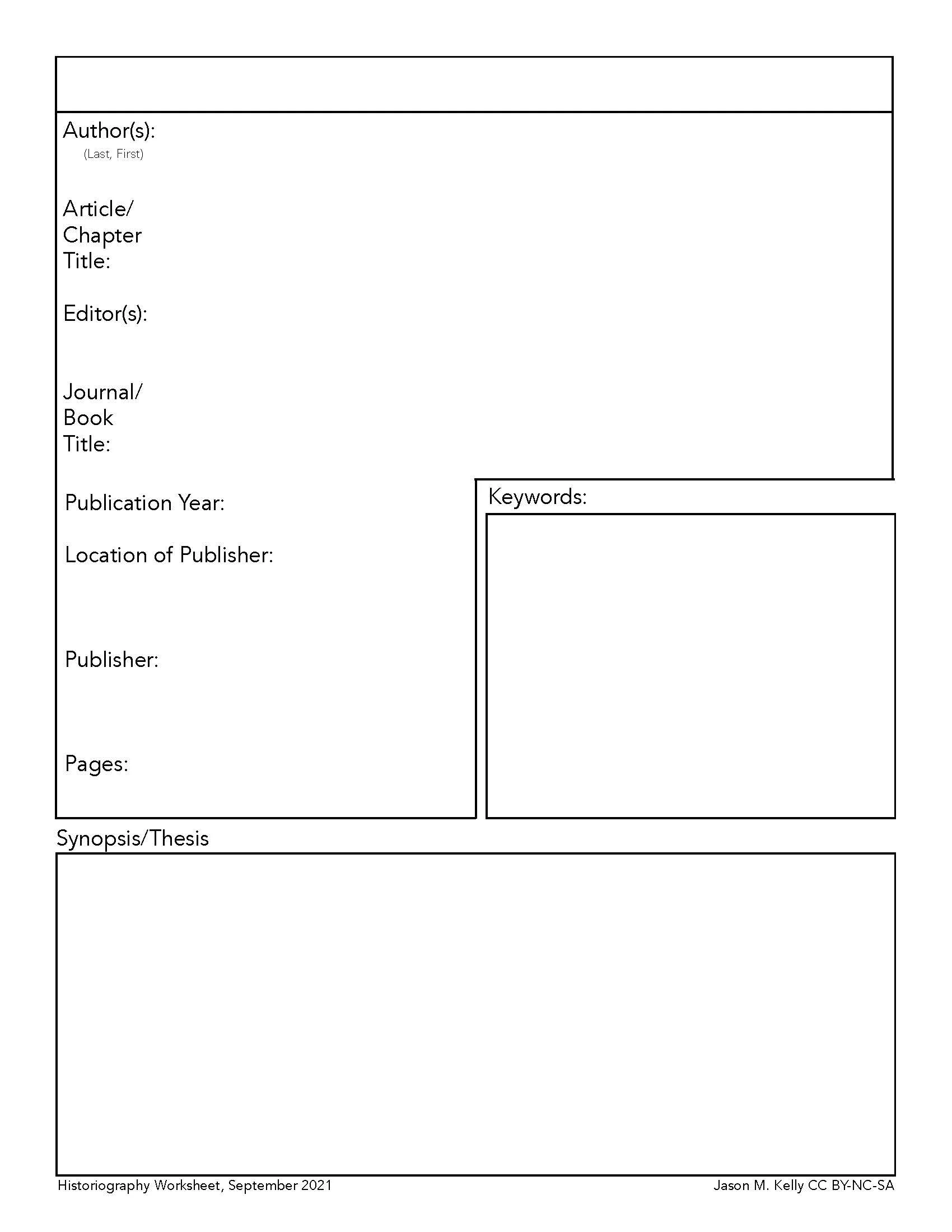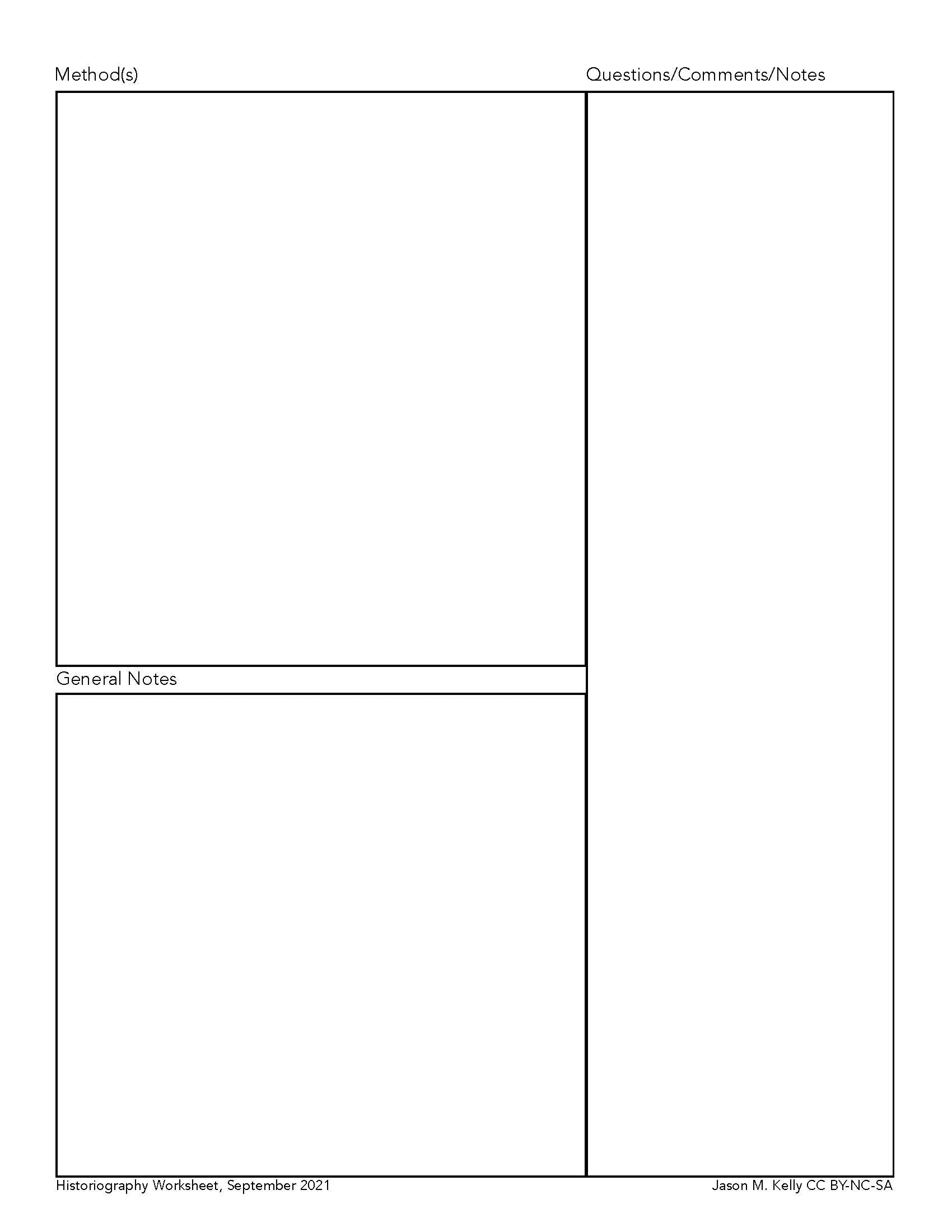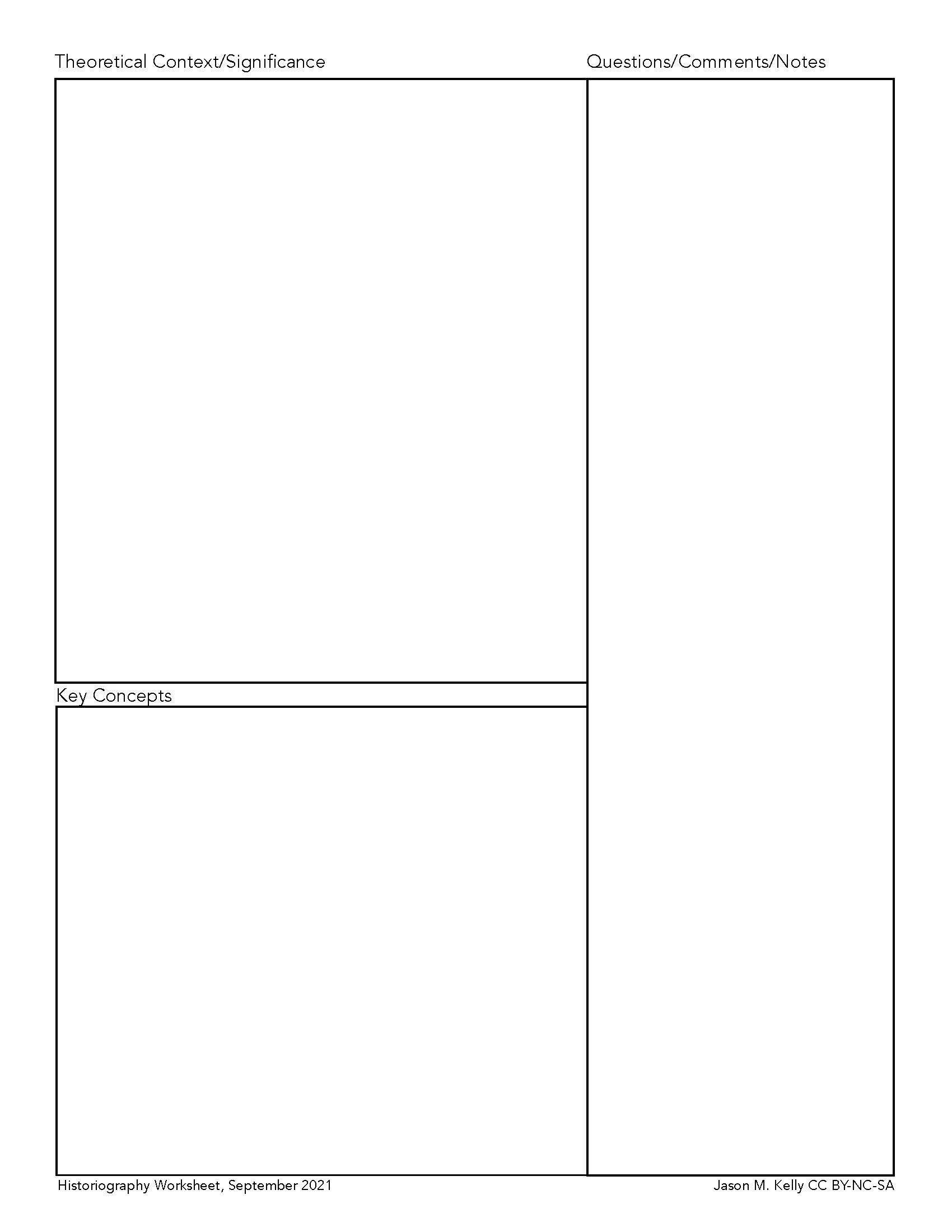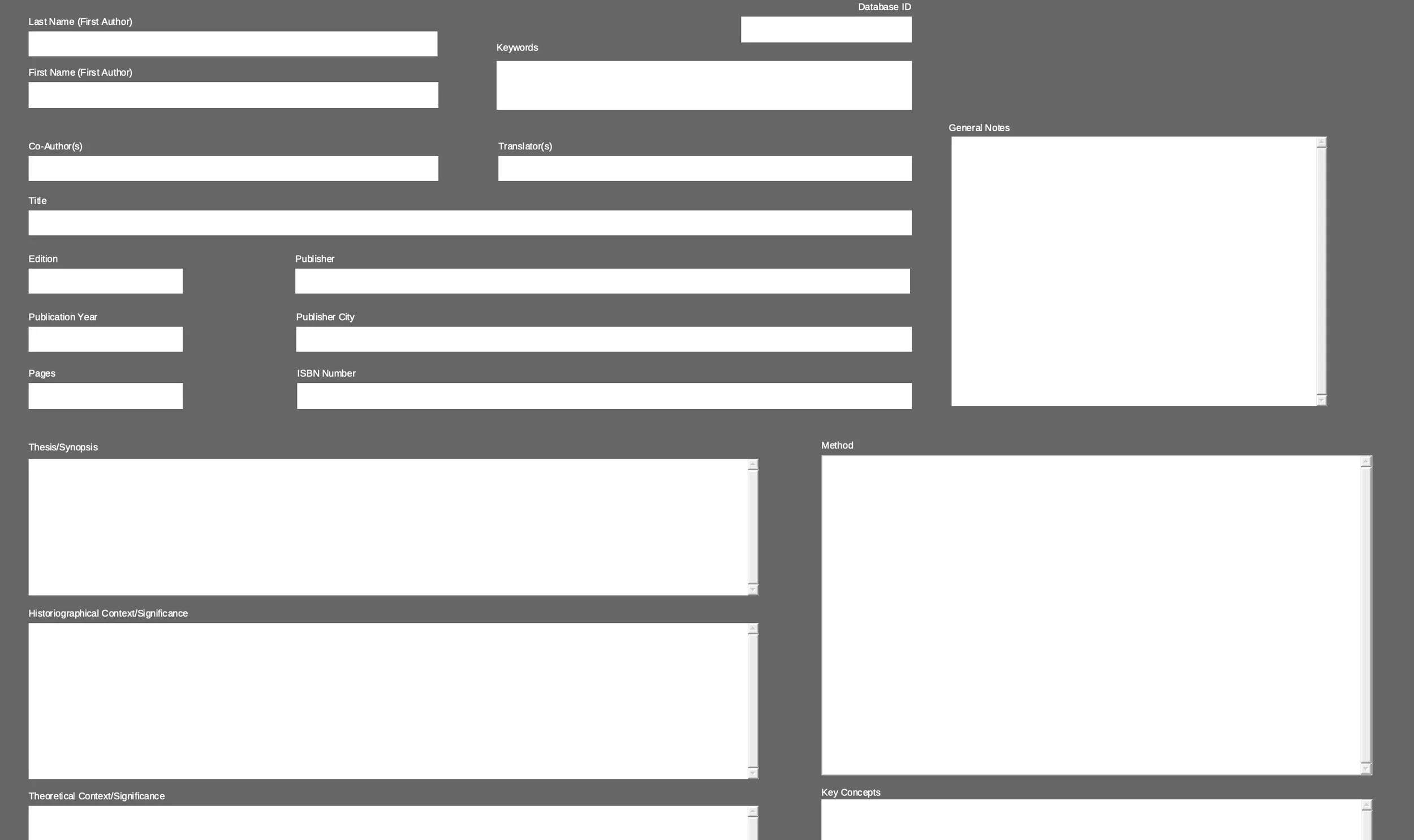Historiography (2): Taking Notes Using the "Historiography Worksheet"
This post is part of a series on Historiography that provides overviews of historiography as a field of study, some examples of how historians approach historiography in their work, and some tools and techniques that might be useful to students at the undergraduate and graduate levels.
There are many different ways to introduce students to historiography. One of my primary tools is a "Historiography Worksheet." The purpose of the Historiography Worksheet is threefold. First, it teaches students about the complexities of historiography--as both a practice and a field of study. Second, it provides a framework for classroom discussion. Third, it offers students a standardized note-taking format that helps students develop their skills analyzing and synthesizing historical arguments.
At its core the worksheet is simple. It's four pages long, blocked out into a series of categories:
Bibliographical Information
Keywords
Synopsis/Thesis
Historical Context/Significance
Theoretical Context/Significance
Method(s)
General Notes
Inspired, in part, by the Cornell Note-taking approach, there is a column labelled "Comments, Questions, Notes" for students to write down questions and reflections on each of the categories.
A PDF version of these pages is available here.
I use the historiographical worksheet for upper-level undergraduate and graduate courses. I distribute it as an interactive PDF, which allows students either to print it and fill out the sections on paper, to complete it in a PDF editor using the text boxes, or to write on it with a digital pen using their tablets. For students using the PDF editor approach, each text box is multi-line and scrollable, which allows them to include as many characters as they desire--even allowing them to cut and paste sections of text for reference.
In some of my courses, such as reading seminars at the graduate level, I use the historiographical worksheets every week. For other courses, I might require the worksheet only for specific readings. In my experience, after students use the worksheet 3-4 times, they begin to feel more confident with it. Some students even begin to use it in their other courses.
For the worksheet to be as effective as possible, I have found that it is important to provide students with 1) a sustained explanation of the purpose of the worksheet and the sections during class and 2) a written guide on how to use the worksheet to take notes. Because historiographical concepts can be challenging at first (students particularly struggle with theory and methods), I emphasize that the worksheet is a learning exercise and that my grading--at least for the first several worksheets--will be based on effort and improvement.
I always have students complete and upload the worksheet to Canvas before arriving to class, which allows me to survey answers before our discussion as a just-in-time teaching approach. Because students have the same structure for their notes, in-class discussions tend to be more lively. Students are often quicker at responding to questions and comments--and, they are more confident, because they've already written up their thoughts.
After we have discussed the first reading in class using the worksheet, I usually let students re-write the worksheet. In fact, I sometimes do this for several sessions. I have also found that distributing a completed worksheet with a model answer is really helpful after the first session.
In classes in which which peer leaders are responsible for guiding the discussion, the worksheet is particularly useful. It gives them a framework around which to lead the discussion, and it ensures that the other students are well prepared for the conversation.
Variations
Google Docs
A slightly more sophisticated version of the Historiography Worksheet assignment uses Google Docs. Students fill in the fields, just as they do in the spreadsheet, but Google Docs allows me to easily anonymize answers and project them onto the screen. So, for example, we might compare students' responses in the "Synopsis/Thesis" block. This would allow us to see variations in responses and inquire why there might be divergent responses. Early in the semester, this exercise helps us define what we mean by a thesis in a historical argument and consider ways that historians state their arguments--and, the strengths and weaknesses of different approaches.
Databases
While I use historiographical worksheets as a pedagogical tool. I encourage students at all levels to consider using these worksheets throughout their time at university--especially if they are in a graduate program. Not only are these worksheets useful for engaging with a text, but they are immensely valuable as note-taking tools in preparing for exams, comps, and writing the historiographical sections of theses and dissertations.
Zotero
I tend to encourage students to keep a copy of all their notes in Zotero. Not only does it make preparing things like annotated bibliographies much easier, but Zotero also allows users to create categories and subcategories and copy, drag, and drop notes wherever they need to have them.
LibreOffice Base
I am also a big fan of LibreOffice, a freeware office suite that rivals that of Microsoft and runs on Apple macOS, Windows, and Linux. Among the programs in LibreOffice is Base, a database program that is similar to Microsoft Access. I have created a Historiography Worksheet template for Base that allows users to store all of their notes in a database on their local computer rather than in a cloud service (don't forget your backups though!). Feel free to use it and expand/adapt it to your needs. You can download it from the FILES folder on my GitHub site.
Snapshot of Historiographical Worksheet in LibreOffice Base




